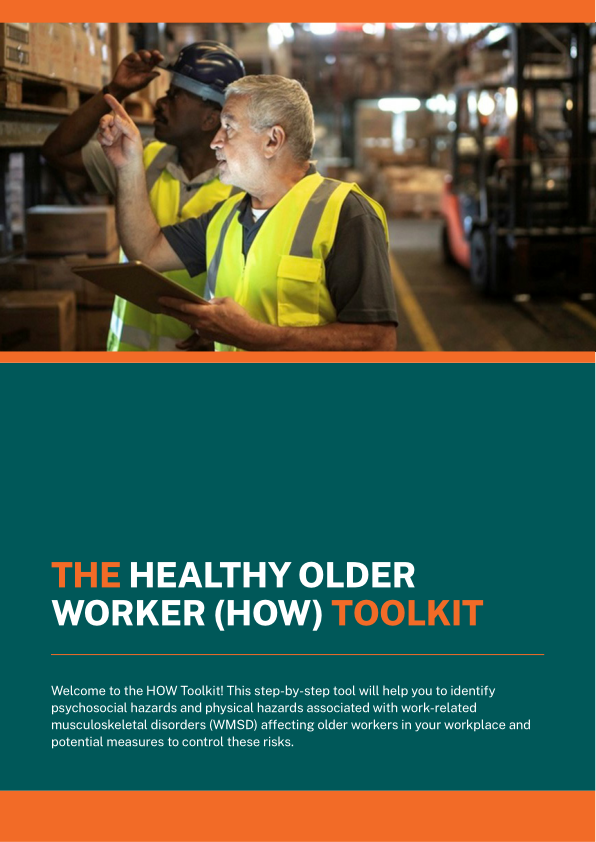The Healthy Older Worker (HOW) toolkit is designed to guide organisations in designing healthy, safe, and sustainable workplaces for older workers.
 | What is the Healthy Older Worker toolkit?The toolkit: - will help you to identify hazards in your workplace that pose a risk of physical or psychological injury for older workers and potential measures to control these risks
- will guide you in developing an action plan that you can use to implement these control measures within your organisation
- can be used multiple times with different risk scenarios.
What are the benefits?- In Australian businesses, the most frequent and costly work-related harms are attributed to musculoskeletal disorders and psychological injuries.
- The Australian Institute of Health and Welfare reports that in 2014-15, 30% of Australians had at least one work-related musculoskeletal disorder (WMSD) and that the prevalence increases with age. Further, WMSDs are responsible for 41% of early retirements of workers aged 45-65 years.
- For older workers, psychological injury worsened by the impact of WMSD may lead to a loss of employment and early retirement. This increases the risk of functional decline, social isolation, and often decreases physical activity which further increases the risk of other comorbid chronic conditions, such as dementia and cardiovascular disease, and death.
- The Healthy Older Worker toolkit is designed to help organisations to implement measures that reduce the incidence of these kinds of physical and psychological injuries in older workers.
Getting StartedThe HOW Toolkit is comprised of three documents: - Guide for using the HOW Toolkit - This document outlines four easy-to-follow steps to aid you in supporting older workers.
- Case Study - This document provides five different examples of companies that have considered their older workforce when re/designing work practice.
- How Toolkit Workbook - This practical interactive workbook walks you through planning your intervention.
|
Futher Reading

